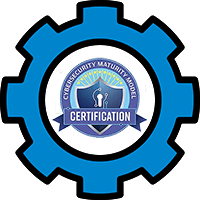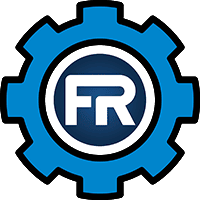As government agencies continue to rely on cloud services and secure data management, companies involved in these sectors must navigate complex regulatory landscapes. The Federal Risk and Authorization Management Program (FedRAMP) and the Cybersecurity Maturity Model Certification (CMMC) are two of the most critical frameworks in this space.
For companies pulling multiple responsibilities in government contracting—such as cloud service providers, cybersecurity firms, and systems integrators—understanding the equivalency between FedRAMP and CMMC is essential. This article explores the nuances of these frameworks, focusing on how businesses can effectively manage compliance when subject to both.
Understanding FedRAMP and CMMC: A Comparative Overview
FedRAMP is a government-wide program that standardizes the security assessment, authorization, and continuous monitoring of cloud products and services. It ensures that cloud service providers meet stringent security requirements before federal agencies can use them.
On the other hand, CMMC is a cybersecurity framework developed by the Department of Defense to safeguard Controlled Unclassified Information (CUI) within the Defense Industrial Base. It is designed to assess contractors’ cybersecurity maturity and ensure they can adequately protect sensitive information.
While both frameworks aim to enhance security within government operations, they differ in scope and application. FedRAMP primarily focuses on cloud service providers, strongly emphasizing continuous monitoring and assessment. CMMC, however, is broader, encompassing all contractors within the DIB and requiring adherence to a tiered maturity model.
- Both frameworks aim to protect federal information systems and sensitive data.
- They require rigorous assessments and ongoing monitoring.
- Both emphasize the importance of security controls and organizational processes.
FedRAMP and CMMC Equivalency: Conceptual Framework
 The concept of FedRAMP and CMMC equivalency revolves around the idea that specific security controls and practices mandated by one framework may fulfill the requirements of the other. Understanding these overlaps can simplify compliance efforts for companies dealing with both frameworks.
The concept of FedRAMP and CMMC equivalency revolves around the idea that specific security controls and practices mandated by one framework may fulfill the requirements of the other. Understanding these overlaps can simplify compliance efforts for companies dealing with both frameworks.
FedRAMP and CMMC rely on the National Institute of Standards and Technology Special Publication 800-53 for security controls. However, CMMC goes beyond NIST by introducing additional practices and processes tiered across three maturity levels derived from NIST SP 800-171.
To achieve compliance with both frameworks, companies must:
- Map FedRAMP controls to the appropriate CMMC practices.
- Identify areas where additional controls or documentation are required for CMMC.
- Implement continuous monitoring and reporting mechanisms that satisfy both frameworks.
Detailed Comparison of Security Controls
When considering FedRAMP and CMMC equivalency, it is essential to examine specific security controls. Here is a comparison of how some critical controls are addressed in both frameworks:
Access Control (AC)
- FedRAMP requires the implementation of access controls based on the principles of least privilege and need-to-know.
- CMMC expands on FedRAMP by incorporating requirements for account management, multi-factor authentication, and role-based access control, particularly at higher maturity levels.
Configuration Management (CM)
- FedRAMP emphasizes the establishment and maintenance of baseline configurations, including the documentation of configuration changes.
- CMMC adds to this by requiring that configuration changes be reviewed and approved through formal change control processes, reflecting a higher level of maturity.
Incident Response (IR)
- FedRAMP mandates the establishment of incident response capabilities, including reporting and handling incidents.
- CMMC builds on this by requiring more sophisticated incident response planning and testing, particularly at higher maturity levels, to ensure rapid and effective response to security incidents.
Risk Assessment (RA)
- FedRAMP focuses on conducting regular risk assessments to identify and mitigate potential threats.
- CMMC expands risk assessment practices to include periodic reevaluation of risks and continuous improvement of risk management processes.
System and Information Integrity (SI)
- FedRAMP requires systems to have mechanisms to identify and correct information integrity issues.
- CMMC enhances this by incorporating additional practices for monitoring, auditing, and continuous improvement in system integrity.
This detailed comparison illustrates that while significant overlap exists, CMMC often requires additional documentation, processes, and maturity in security practices beyond what FedRAMP mandates.
Challenges for Companies with Multiple Responsibilities
 For companies involved in both cloud services and other aspects of government contracting, managing compliance with both FedRAMP and CMMC can be daunting. The primary challenges include:
For companies involved in both cloud services and other aspects of government contracting, managing compliance with both FedRAMP and CMMC can be daunting. The primary challenges include:
- Complexity of Compliance: Juggling multiple frameworks with overlapping yet distinct requirements can lead to confusion and increased administrative burden.
- Cost: Complying with both frameworks requires significant time, resources, and investment in expertise. This is especially true for small and medium-sized enterprises that may lack the resources of larger organizations.
- Operational Efficiency: Maintaining compliance across multiple frameworks can slow down business operations and innovation, particularly when additional documentation and controls are required.
- Risk of Non-Compliance: Failure to adequately address the requirements of either framework can result in penalties, loss of contracts, or reputational damage.
Best Practices for Achieving FedRAMP and CMMC Compliance
To effectively manage compliance with both FedRAMP and CMMC, companies should adopt the following best practices:
- Integrated Risk Management: Develop a unified risk management strategy that addresses the requirements of both frameworks. Use standard tools and methodologies for risk assessment and mitigation.
- Centralized Compliance Management: Establish a centralized team or function to oversee compliance with both FedRAMP and CMMC. Implement a governance framework that aligns with both standards.
- Continuous Monitoring and Automation: Leverage automation tools to streamline constant monitoring and reporting. Implement security information and event management (SIEM) systems that can handle the data requirements of both frameworks.
- Leverage Common Controls: Identify and document standard controls that satisfy both FedRAMP and CMMC requirements. Use these standard controls to reduce duplication of effort and streamline compliance processes.
Handle CMMC, FedRAMP, and More with Continuum GRC
By adopting integrated risk management strategies, centralizing compliance efforts, and leveraging standard controls, companies can effectively manage the challenges of dual compliance and maintain their competitive edge in the government sector.
One way to manage multiple requirements is through a unified compliance management system. With Continuum GRC, you get this and more, including centralized control and AI-powered documentation and reporting.
Continuum GRC is a cloud platform that stays ahead of the curve, including support for all certifications (along with our sister company and assessors, Lazarus Alliance). We provide risk management and compliance support for every major regulation and compliance framework on the market, including:
- FedRAMP
- StateRAMP
- NIST 800-53
- FARS NIST 800-171 & 172
- CMMC
- SOC 1 & SOC 2
- HIPAA
- PCI DSS 4.0
- IRS 1075 & 4812
- COSO SOX
- ISO 27001, ISO 27002, ISO 27005, ISO 27017, ISO 27018, ISO 27701, ISO 22301, ISO 17020, ISO 17021, ISO 17025, ISO 17065, ISO 9001, & ISO 90003
- NIAP Common Criteria
- And dozens more!
We are the only FedRAMP and StateRAMP-authorized compliance and risk management solution worldwide.
Continuum GRC is a proactive cyber security® and the only FedRAMP and StateRAMP-authorized cybersecurity audit platform worldwide. Call 1-888-896-6207 to discuss your organization’s cybersecurity needs and learn how we can help protect its systems and ensure compliance.
[wpforms id= “43885”]